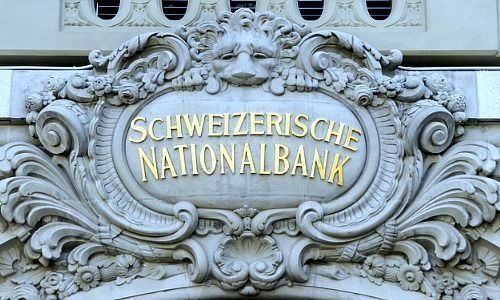The Swiss central bank has not been quick to return its key interest rate back to a more normal level with the currency a major worry for exporters. A big U.S. investment bank now says that the bank will stick to its strategy for a long while to come.
Demands from the Swiss finance industry for the central bank to finally do away with negative rates have not had the desired effect. With the key interest rate at a record low, banks and also pension funds can’t earn money with domestic bonds and some even have to pay interest on their deposits at the Swiss National Bank.
Given the circumstances, the calls for a change in policy were unsurprising. In times of stronger-than-average growth and persistent price stability, hardly anything seemed to stop the bank from returning to a more normal policy.
Rate Hike Looks Unlikely
The Swiss franc, the main reason for the bank’s decision to open the floodgates, kept fairly steady at an elevated level since the bank decided to break its peg to the euro in January 2015. Economists last year agreed that it was a question of now or never, given the favorable conditions.
But since late autumn 2018, signs have been that the central bank wouldn’t budge. The directorate led by Thomas Jordan kept indicating that the franc remained expensive, while the economy started slowing down.
A Change in Outlook
In the Eurozone, and importantly so in Germany, Switzerland’s largest trading partner, the slowdown had started months earlier. The leading indicators, such as the Purchasing Managers’ Index PMI, had started to plunge in early 2018. With the trade conflict between the U.S. and China flaring up, mounting concern about the Brexit solution sought by the U.K. government as well as expected gains by populist parties at the forthcoming European elections combined to add to the worries.
Today, the U.S. investment bank Morgan Stanley decided to change its outlook for SNB policy. The economists now expect the bank to keep rates unchanged for the coming two years. A change that will not surprise many, given that the bank already signaled it wasn’t in a hurry to make a change.
The bank mentioned market volatility, disappointing economic data in the Eurozone and subdued inflation as main reasons for the probable reluctance of the SNB to follow a possible rate rise by the ECB.
And yet, the bank sees «limited upside» for the franc, despite the difficult markets and the uncertainties mentioned.
European Slowdown
The main reason for the changed outlook however is the economic slowdown in the Eurozone – which forced the ECB to be more cautious in tightening the screws. And therefore, the U.S. bankers see an increase of 15 basis points only in the Eurozone through mid-2020.
The outlook for Swiss banks to get a helping hand from the central bank soon has dimmed – and demands for higher rates won’t soon be reflected.































